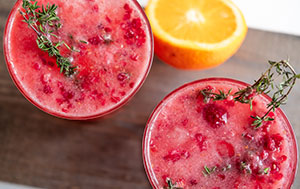Consumers globally are looking for products made with simpler, recognisable ingredients – resulting in “cleaner” labels.
In Europe, the demand in the clean label space is increasing and becoming sophisticated, with consumers actively researching ingredients to understand what is in their food and drink.
“Consumer demand and strict regulation in this market, can create a challenge for food and beverage formulators, who need to take different aspects into account when formulating a product. These areas include performance on taste attributes, ideal nutritional content, recognizable ingredients, innovative solutions, attractive positioning of the product and compliance,” says Sally- Ann Krzyzaniak, Director of Scientific and Regulatory Affairs for Tate & Lyle EMEA.
Reducing sugar with clean label solutions- what consumers want and how to formulate accordingly
“The demand from our customers to work with stevia-derived ingredients as a way to balance flavour, with less or no sugar, keeps growing. This growth is also driven by the fact that, when used in appropriate quantities, some stevia-derived ingredients can be labeled simply as “natural flavouring” - supporting the growing consumer demand for products with simpler, recognisable ingredients.
“This is particularly the case in the beverage category. Consumers increasingly want drinks that taste good, are low in sugar and have no artificial sweeteners,” says Greet Vandeputte, Category Development Manager at Tate & Lyle.
Tate & Lyle research from 2020 showed that 94% of global consumers decreased their intake of sugary drinks in the past year1. The global marketplace is responding with increased investment in sugar reduction innovation. Already almost 1 in 10 of all food and drink launches in 2020 had no, low, or reduced sugar claims2.
Additionally, according to Tate & Lyle data, 84% of consumers read ingredient labels and want drinks with no artificial ingredients. Mintel GNPD Europe data showed absence claims such as “free from additives” or “free from artificial additives,” are increasingly popular among consumers. In fact, more than 40% of the drinks launched in 2020 made this claim3.
What challenges do product developers face?
Getting the right flavour can be complicated as there can be some taste challenges with sugar-reduced drinks.
Using a flavour modifier can help limit the bitterness and lingering taste that can be associated with stevia and other sweeteners. In a drink, a flavour modifier can work in combination with sweetening agents such as sugar, stevia or other sweeteners to create a preferred taste profile. Flavour modifiers may also draw out desirable flavours in the beverage, like increasing juicy or citrusy notes in a flavoured water or ready-to-drink tea.
What are flavour modifiers and how are they labelled?
Stevia leaf extracts are produced from the plant Stevia rebaudiana. Some of these extracts, like high purity rebaudioside A, are commonly used as high intensity sweeteners, providing sweetness to products without the calories. In Europe these products can be labelled as ‘steviol glycosides from stevia’ or E 960a.
However, it is possible to produce more than just high intensity sweeteners from the stevia leaf.
Some stevia extracts when used at a sub sweet level - that is below the detection threshold of a sweet taste - can also act as flavours with modifying properties (FMPs).
When used appropriately in product formulations, these ingredients do not make products taste sweet, but modify other aspects of the flavour profile of a product, for example, drawing out juicy notes, or reducing bitterness.
Other stevia ingredients, like glucosylated steviol glycosides or GSG, which are approved as sweeteners in many other parts of the world, and by CODEX, are not yet approved as sweeteners in the EU. However, specific GSG products fall into the regulatory category of natural flavouring preparations and are commonly used at sub sweet levels as flavourings with modifying properties. In line with labelling law in the EU and many other markets, plus industry best practise guidance, these ingredients can be labelled as natural flavour or natural flavouring on products.
What are the regulatory concerns?
Product developers need to understand if specific use levels have been set in legislation. For example, high purity rebaudioside A has been reviewed and approved in Europe as a flavouring substance and limits for its use are set in the flavouring legislation, Regulation 1334/2008. In contrast, natural flavouring preparations produced from food sources, including stevia derived natural flavouring preparations, are not required to go through individual regulatory approval and do not have specific use limits set in European flavouring legislation.
However, to be legally compliant, all FMPs must be used below the sweetness threshold, and they must have a demonstrated flavour modifying effect. Both the USA Flavor and Extract Manufacturers Association (FEMA) and the European Flavour Association (EFFA) have published detailed guidance which sets out best practise in the use of FMPs including sensory methodologies to determine maximum use thresholds.
At Tate & Lyle, our FMPs like Zolesse and Zolesse 2.0, meet the specifications for FEMA GRAS. This means that not only have the ingredients been independently assessed for safety, but their sensory impact has been demonstrated and appropriate levels of use – at a sub-sweet threshold – have been established.
Tate & Lyle has local knowledge of regulatory and labelling rules and provides its customers with best-in-class technical support for use of stevia-based flavours in product formulations.
We're ready to support product developers and reformulators who are looking to make a less sweet or unsweetened product with a cleaner label, that will deliver on consumer desires.
1 - Tate & Lyle Proprietary Research, 2020 Global Consumer Ingredient Perception Research – 14 Countries
2 - Mintel GNPD
3 - Mintel GNPD
